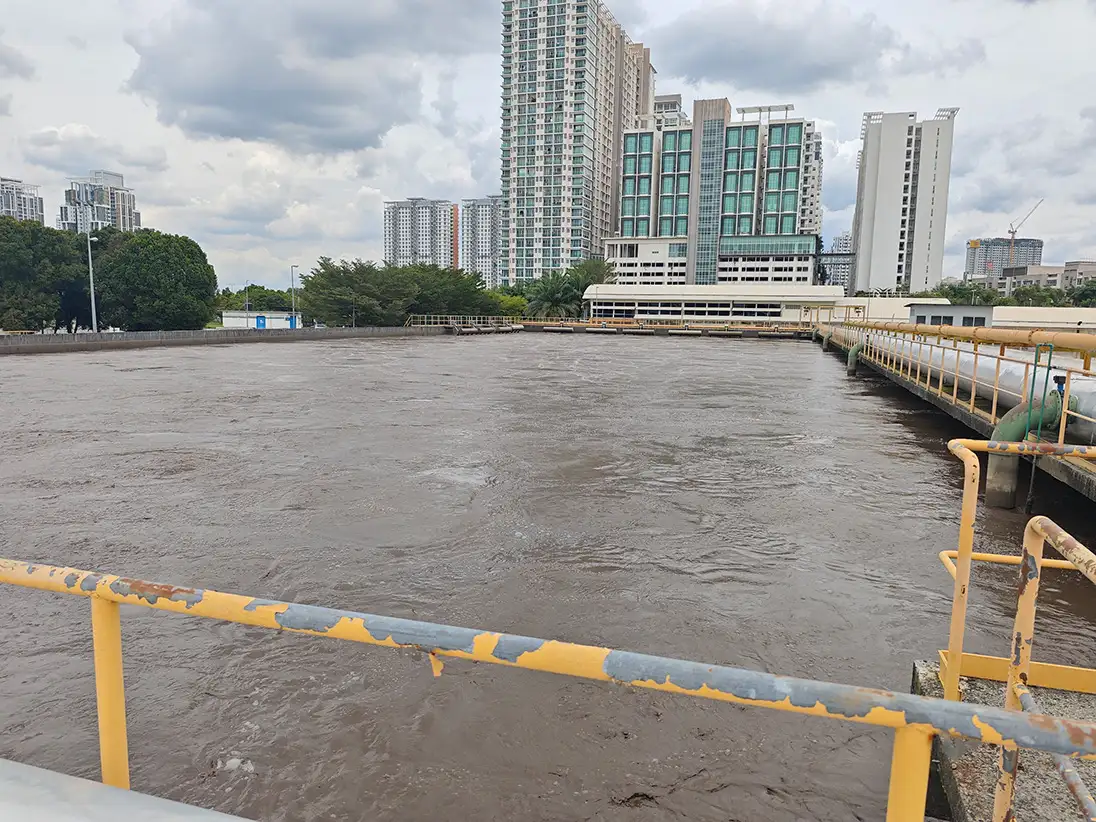A Detailed Explanation of the Full Process of Membrane Bioreactor (MBR) Sewage Treatment

For ordinary people, a sewage treatment plant is like a mysterious "black box". Sewage goes in and clean water comes out, but what happens in between? Today, we will take the Membrane Bioreactor (MBR) as the core and break down the whole process of "cleaning" sewage step by step. You don't need professional knowledge. Just follow the guidance of this article, and you will be able to understand this "sewage rebirth story".
Table of Contents

A Seven-step Transformation from "Sewage" to "Clean Water"
Step 1: Intercepting the "Big Guys" - Pretreatment
Goal: Remove the "conspicuous" objects in the sewage. When sewage first enters the treatment plant, it's like a pot of "garbage soup", with branches, plastic bags, sand, gravel, and even rags floating in it. If these "big guys" are not removed in advance, they can damage subsequent equipment, just like stones in rice can damage a rice cooker. Specific Operations:
- Coarse Screen (Similar to a "Giant Colander")
- Function: Intercept garbage with a diameter exceeding 20 millimeters, such as beverage bottles and branches.
- Principle: Sewage flows through a set of metal bars, and large pieces of garbage are caught. A robotic arm automatically clears them away.
- Case: A certain city's sewage treatment plant fishes out 2 tons of garbage through the coarse screen every day, which is equivalent to the load capacity of a small truck.
- Fine Screen (Upgraded "Tea Strainer")
- Function: Filter debris between 5 - 20 millimeters, such as cigarette butts and fruit pits.
- Principle: The bars are more closely spaced. Some fine screens even adopt a rotary design, filtering while rotating like a drum washing machine.
- Grit Chamber ("Gravity Sifter")
- Function: Settle heavy particles such as sand, gravel, and cinder.
- Principle: The flow rate of sewage decreases, and sand and gravel sink to the bottom of the tank due to their weight and are discharged by a screw conveyor.
- Importance: Grit can wear out pumps and pipes like sandpaper. The grit chamber can reduce equipment maintenance costs by more than 30% annually.
Step 2: Microorganisms "Having a Meal" - Biodegradation
Goal: Let bacteria consume the "dirty substances" in the sewage. After pretreatment, the sewage is still turbid, containing dissolved organic matter such as feces and food residues. At this time, we need to invite the "cleaning crew" - microorganisms. They will decompose pollutants like having a buffet.

Core Equipment: Biological Reaction Tank
- Microorganisms' "Canteen"
- Types of Bacteria:
- Aerobic Bacteria: Require oxygen and are good at decomposing fats and proteins.
- Anaerobic Bacteria: Work in an oxygen - free environment and deal with stubborn organic matter (such as certain industrial wastewater).
- Food Source: Organic matter (COD, BOD) in the sewage is their "main course".
- Types of Bacteria:
- Aeration System - Microorganisms' "Gym"
- Function: Inject air into the tank to enhance the vitality of aerobic bacteria.
- Principle: The bottom of the tank is covered with aeration pipes. A blower blows in air, generating dense bubbles (similar to an aquarium aerator).
- Energy Consumption Fact: Aeration accounts for 60% - 70% of the total energy consumption of MBR. Therefore, a new type of aeration head design can save 20% of energy.
- Ultra - High Concentration Sludge - MBR's "Secret Weapon"
- Traditional Process: The sludge concentration is about 3 - 5 grams per liter, and microorganisms are likely to be "underfed".
- MBR Process: The sludge concentration is as high as 8 - 12 grams per liter. The density of microorganisms doubles, and the degradation efficiency increases by more than 50%.
Step 3: Membrane Filtration - Precise "Water Screening"
Goal: Screen out pure water with pores tens of thousands of times thinner than a human hair. After biological treatment, the sewage is still mixed with microorganisms and suspended solids, like a pot of "bacterial porridge". At this time, membrane modules act as "super sieves" to separate clean water.

Working Principle of Membrane Modules
- Types and Precision of Membranes
- Microfiltration Membrane: The pore size is 0.1 - 0.4 microns (about 1/500 of the diameter of a human hair), which can block bacteria and colloids.
- Ultrafiltration Membrane: The pore size is 0.01 - 0.1 microns and can intercept viruses and macromolecular organic matter.
- Analogy: The filtration precision of an ordinary water filter pitcher is about 1 micron. The fineness of MBR membranes is 10 - 100 times that!
- Filtration Method
- External Pressure Type: Sewage flows in from the outside of the membrane fibers, and clean water is collected from the inside (similar to sucking water with a straw).
- Role of the Suction Pump: It creates negative pressure, allowing water molecules to "squeeze through" the membrane pores while pollutants are intercepted on the membrane surface.
- Backwashing - The Membrane's "Self - Cleaning"
- Problem: Pollutants can clog the membrane pores (membrane fouling), resulting in a decrease in water output.
- Solution: Every 10 - 15 minutes of operation, the membrane surface is flushed with clean water in the reverse direction to wash away dirt.
- Daily Maintenance: Immerse the membrane module in sodium hypochlorite every month to kill attached microorganisms.
Step 4: Concentrate Treatment - "Recycling" of Resources
Goal: Turn waste into resources. After membrane filtration, two substances are produced: clean water that passes through the membrane and concentrate (containing high - concentration sludge and undigested organic matter) that is intercepted. This concentrate is not garbage but a "treasure" that can be reused. Treatment Methods
- Return to the Biological Tank
- Principle: Pump the concentrate back into the biological reaction tank, and microorganisms continue to decompose the remaining organic matter.
- Benefits: Reduce sludge discharge and lower treatment costs.
- Sludge Dewatering - From "Thin Mud" to "Mud Cake"
- Equipment: Centrifugal dewatering machines (similar to the spin - dry function of a washing machine) or plate - and - frame filter presses (squeezing out water with pressure).
- Result: The water content of sludge is reduced from 99% to less than 80%, turning it into a "mud cake" that is easy to transport.
- Uses:
- Landfill (must meet environmental protection standards).
- Composting (agricultural organic fertilizer, heavy metals need to be removed).
- Incineration for power generation (about 300 kWh of electricity can be generated from 1 ton of dry sludge).
Step 5: Disinfection - The Final "Safety Line"
Goal: Eliminate pathogens that have slipped through the net. Although membrane filtration can remove 99.9% of microorganisms, a very small number of viruses or bacteria may still survive. Disinfection is like adding a "safety lock" to the water quality. Common Disinfection Technologies
- Ultraviolet (UV) Disinfection
- Principle: Ultraviolet light damages the DNA of microorganisms, making them unable to reproduce.
- Advantages: No chemical residues, suitable for water that is directly reused.
- Limitations: The water body's transparency must be ensured. Excessive suspended solids will block the ultraviolet light.
- Sodium Hypochlorite Disinfection
- Principle: Releases chloride ions to oxidize the cells of microorganisms.
- Dose Control: Excessive chlorine can produce carcinogens. The residual chlorine content needs to be strictly monitored (usually ≤ 0.3mg/L).
Step 6: Reuse - The "Second Life" of Sewage
Goal: Maximize the value of every drop of water. The treated clean water has reached the first - class A standard of the "Pollutant Discharge Standard for Urban Sewage Treatment Plants" in China and has a wide range of uses:
- Urban Reuse
- Greening Irrigation: The Beijing Olympic Park uses reclaimed water to irrigate green spaces, saving 1 million tons of water annually.
- Road Cleaning: 80% of Shenzhen's sanitation water comes from reclaimed water.
- Toilet Flushing: In Singapore's "NEWater" project, reclaimed water is directly connected to residents' toilets.
- Industrial Water Use
- Cooling Water: The circulating cooling system of power plants has relatively low requirements for water quality, and reclaimed water can completely replace tap water.
- Boiler Make - up Water: It needs further advanced treatment (such as reverse osmosis) to remove dissolved salts.
Step 7: Intelligent Monitoring - The "Smart Brain" of the System
Goal: Make sewage treatment more accurate and labor - saving. Modern MBR systems have achieved a high degree of automation, and real - time optimization of operations is carried out through sensors and algorithms. Key Technologies
- Membrane Fouling Early Warning
- Monitoring Parameters: Transmembrane pressure difference (TMP), membrane flux (water volume).
- Intelligent Response: When the TMP exceeds the threshold, the system automatically starts backwashing or adjusts the aeration intensity.
- On - line Water Quality Detection
- Types of Probes: pH, dissolved oxygen (DO), turbidity, and COD sensors.
- Cloud Management: Data is uploaded to the control center in real - time, and engineers can remotely control and adjust it through a mobile APP.
Interconnected Links, Technology Achieves Cleanliness
Each treatment link of MBR is like a precise assembly line: Pretreatment is the "security guard", biodegradation is the "digester", membrane filtration is the "screener", disinfection is the "quality inspector", and the intelligent system is the "commander" that coordinates the overall situation. It is the close cooperation of these links that turns sewage from "turbid" to "clear", and finally returns it to the cycle of nature and daily life. The next time you see the water jets in a park's sprinkler irrigation system or the steam from a cooling tower in a factory, you might smile knowingly: Behind it is a wonderful battle between technology and sewage.
Hi, I am the author of this article and I have been working in this field for more than 8 years. If you want to know about water treatment related knowledge and products, please feel free to ask me any questions.

